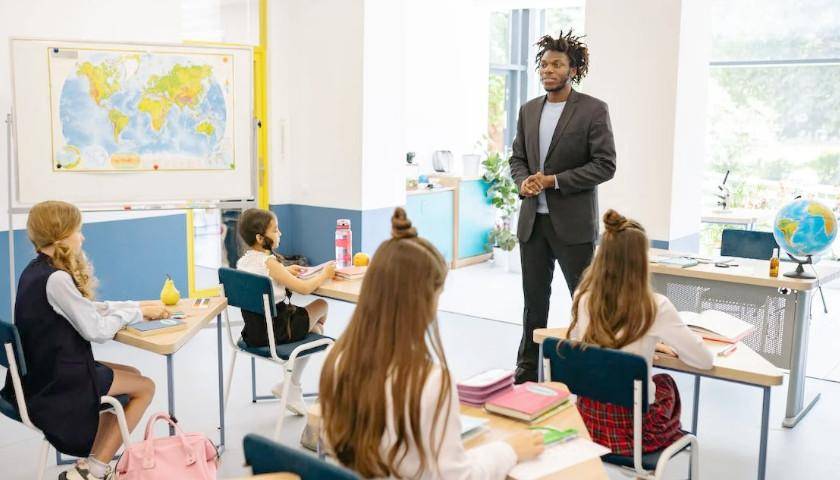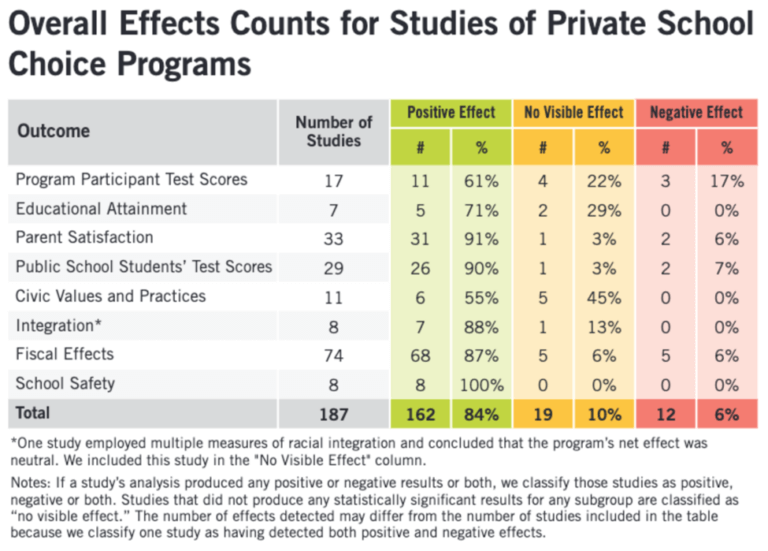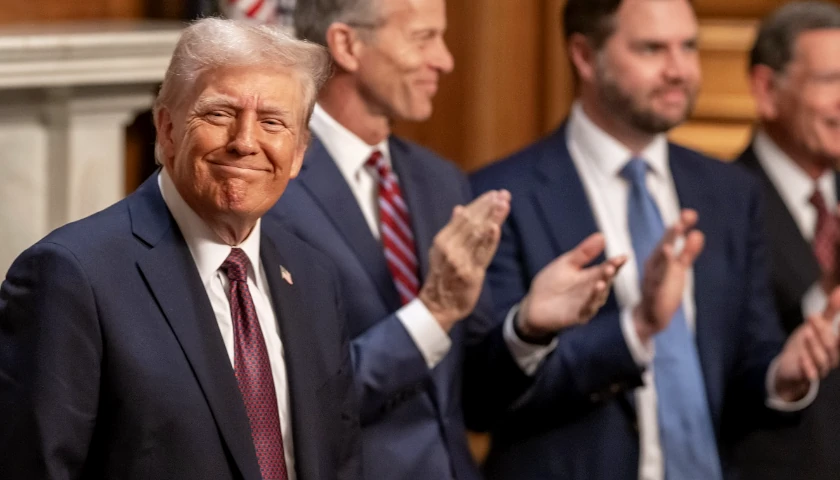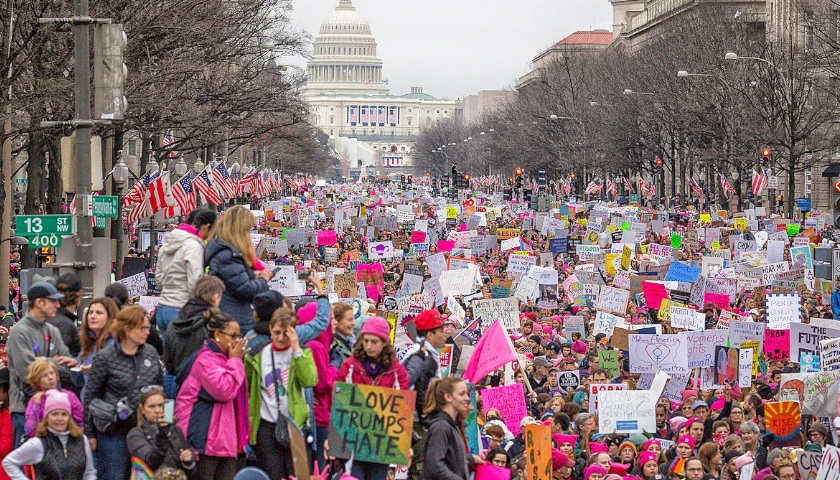by Larry Sand
In just three years, the number of states with universal or near-universal private school choice programs has grown from zero to 10, and the number of students eligible for these programs has increased by 60%. According to the latest ABCs of School Choice – EdChoice’s comprehensive report about all matters pertaining to educational freedom—32 states (plus Washington, D.C., and Puerto Rico) are using school choice as of 2023. Additionally, policymakers in 40 states debated 111 educational choice bills last year alone. Overall, approximately 20 million students—or 36% of all kids—are now eligible for some kind of private-choice program.
But what’s good for children and their families is problematic for the teachers’ unions and their fellow travelers. As such, on January 22—not coincidentally the beginning of National School Choice Week—the Partnership for the Future of Learning released a toolkit, maintaining that “voucher programs are “deeply rooted in segregation, racism, and discrimination.” The PFL, which is comprised of predominantly left-wing outfits—the National Education Association, Chan Zuckerberg Initiative, Learning Policy Institute, etc.—adds that private schools “do not have necessary accountability measures.”
The struggle to wrest power from the big government-teacher union complex by pulling the race card is anything but new, however. In 2017, American Federation of Teachers president Randi Weingarten proclaimed, “This privatization and disinvestment are only slightly more polite cousins of segregation.” (The incorrigible and widely maligned union boss most recently argued nonsensically that school choice “undermines democracy.”)
On race, the anti-choicers have it exactly backward. Almost 70 years after Brown v. Board of Education, public schools are still segregated. As of 2021, approximately 60% of black and Hispanic public school students attended schools where 75% or more of children were students of color.
This segregation is easy to explain. Throughout most of the country, kids are forced to attend school according to their zip code, and since residential areas tend not to be integrated, schools remain segregated. But parental choice can change that.
At the same time, researcher Greg Forster reports that ten empirical studies have examined private school choice programs on segregation, and nine found that the programs reduced it, while one found no visible difference. Not one showed that choice leads to racial discrimination. Also, concerning race, a 2021 poll affirms that when given a fair description of school choice types, a great majority of minority parents are in favor of it.
Additionally, a 2023 poll by YouGov revealed that educational savings accounts are very popular with black parents. In fact, 70.3% of black parents are in favor of the program. By comparison, 59.1% of white parents and 50.8% of Hispanic parents support ESAs. Moreover, 78.9% of black teachers favor ESAs, while 56.2% of white teachers and 60.7% of Hispanic teachers are in support. ESAs allow parents to receive a deposit of public funds into a government-authorized savings account with restricted but multiple uses. Those funds can cover private school tuition and fees, online learning programs, private tutoring, community college costs, higher education expenses, and other approved customized learning services and materials.
Actually, parents of all colors are unhappy with zip code-mandated schooling. A January parent survey revealed that 72% of parents “considered new schools for their children last year—a 35% increase over 2022.” Also, 63% searched for a new school, and 44% were able to choose one.
Politically, school choice is popular across the board. A June 2023 RealClear Opinion Research poll found that 66% of Democrats, 80% of Republicans, and 69% of Independents favored school choice. A September 2023 poll from “Yes Every Kid” found that 66% of voters support scholarship tax credits. This includes 80% of parents, 75% of Republicans, and 65% of Democrats.
Denisha Allen, a senior fellow at the American Federation for Children, notes that black education entrepreneurs and parents are working to push the boundaries of school choice. “Black-founded schools are diverse in terms of curriculum, pedagogy, and school type. They include…highly regarded private schools like Discovery Lane in Maryland and Crossover Prep Academy in Oklahoma, as well as innovative microschools like The Lab School and Eminence Academy in Memphis. There are STEM-focused schools like Anderson Academy of Math & Science in Las Vegas; STEM-based and African-centered schools like The XyayX Institute in Brooklyn; and even more eclectic schools like Florida’s Kind Academy, which fuses project- and nature-based learning with flexible scheduling.”
Regarding the PFL’s non-accountability charge, in reality, it’s the traditional government-run schools that are culpable. Teachers almost never get fired for doing a bad job and get regular raises regardless of their effectiveness. Schools are also constantly clamoring for—and usually receive—more funding, but performance is rarely affected by the infusion of cash. Speaking of effectiveness, the latest NAEP or “Nation’s Report Card,” discloses that nationwide, 29% of the nation’s 8th-graders are proficient in reading, and just 26% are proficient in math.
The ultimate in accountability lies with parents, who, when freed from zip code shackles, can find the best educational fit for their children.
To show how popular choice is with the public, only one such program has ever been undone. In 2023, Illinois’ modest scholarship program was killed by Democrats in the state legislature, making it the first state to eliminate an established choice program. With big financial assist from the Chicago Teachers Union, and Gov. J.B. Pritzker, who refused to help save the program, 9,600 low-income kids who tried to escape from their traditional public schools are being forced back into them. And, of course, the 20,000+ people on the waiting list now have no hope of a better educational experience.
Furthermore, school choice is taxpayer-friendly. The U.S. Census Bureau reports that K–12 public schools spent an average of $14,347 per pupil in 2021. However, the nation’s 22,440 private K–12 schools’ average tuition rate is just $12,350 per student.
An extensive list of the benefits of school choice can be summed up by the following table from EdChoice’s 2023 edition of The 123s of School Choice:
The push for educational freedom is anything but over. In 2024, a number of states could join the growing list: Tennessee, Texas, North Dakota, Alabama, Mississippi, and Louisiana are all planning to implement some form of school choice.
It’s time to put parents back in charge of their children’s education. The government and its unions are flunking out.
– – –
Larry Sand, a retired 28-year classroom teacher, is the president of the non-profit California Teachers Empowerment Network – a non-partisan, non-political group dedicated to providing teachers and the general public with reliable and balanced information about professional affiliations and positions on educational issues. The views presented here are strictly his own.




